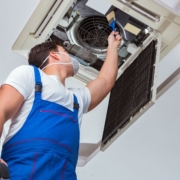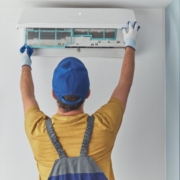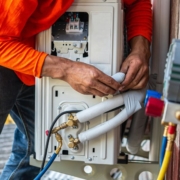How to Reset AC Compressor
An air conditioning (AC) compressor is a key component that circulates refrigerant through the system. If the compressor stops working, the AC will not cool properly. Resetting the AC compressor can resolve minor issues caused by electrical overloads, tripped circuits, or overheating. Understanding how to safely reset the unit is important for maintaining the efficiency and longevity of the system.
Steps to Reset an AC Compressor
The first step is to turn off the power supply to the AC unit. This can be done by switching off the circuit breaker or disconnecting the main power source. Ensuring that the unit is completely off prevents electrical shock or damage to the system during the reset process.
Next, locate the compressor reset button on the unit. Many AC compressors have a small red or black button, often found on the side or near the service panel. Consult the manufacturer’s manual if the location is unclear. Press the reset button firmly and hold it for approximately 30 seconds. This allows the internal overload protector to reset and clear any temporary faults.
After pressing the button, wait at least five minutes before restoring power. This waiting period ensures that the compressor has cooled down completely. Once the time has passed, turn the circuit breaker or power switch back on. The AC system should resume normal operation if the reset was successful.
In some cases, resetting the compressor may not resolve the issue. Persistent problems may be caused by low refrigerant levels, damaged electrical components, or a faulty compressor. If the AC fails to operate correctly after a reset, professional service is recommended. Certified technicians can perform detailed diagnostics, check refrigerant pressure, and replace any defective parts safely.
Safety Precautions
Resetting an AC compressor involves working with electrical components. Always wear insulated gloves and avoid touching exposed wiring. Ensure that all tools are dry and in good condition. Avoid attempting repairs if you are unfamiliar with electrical systems, as this can result in injury or damage to the AC unit.
It is also important to avoid repeated resets in a short period. Frequent tripping of the compressor indicates an underlying issue that must be addressed. Continuous resetting without identifying the root cause can lead to permanent damage to the compressor or the AC system.
FAQ
How often should an AC compressor be reset?
An AC compressor should only be reset when necessary, such as after an electrical overload or when the unit has overheated. Frequent resets suggest mechanical or electrical issues that require professional attention.
Can I reset the compressor without turning off the power?
No, always turn off the power before attempting a reset. Working on a live AC unit is dangerous and can cause electrical shock or further damage.
What if the reset button is not visible?
Some compressors do not have an accessible reset button. In these cases, turning the AC off for at least 10 minutes can allow the internal overload protector to reset automatically. Consult the user manual for specific instructions.
Will resetting the compressor fix low refrigerant?
No, a reset will not solve issues related to refrigerant levels. Low refrigerant can prevent the AC from cooling effectively and may damage the compressor over time. A certified technician should inspect and recharge the system if needed.
Is it safe to reset the compressor multiple times?
Repeated resets can strain the electrical components and may indicate a more serious problem. If the compressor trips frequently, a professional assessment is recommended to prevent permanent damage.
Conclusion
Resetting an AC compressor is a useful troubleshooting step when the unit stops working due to electrical overloads or temporary faults. The process involves turning off the power, pressing the reset button, and waiting for the system to cool before restoring electricity. Safety precautions, such as wearing insulated gloves and ensuring the power is off, are critical. While a reset can restore functionality in some cases, persistent problems often require professional inspection to address underlying mechanical or electrical issues. Regular maintenance and monitoring of refrigerant levels, electrical connections, and system performance can reduce the likelihood of compressor failures and extend the life of the AC unit.










